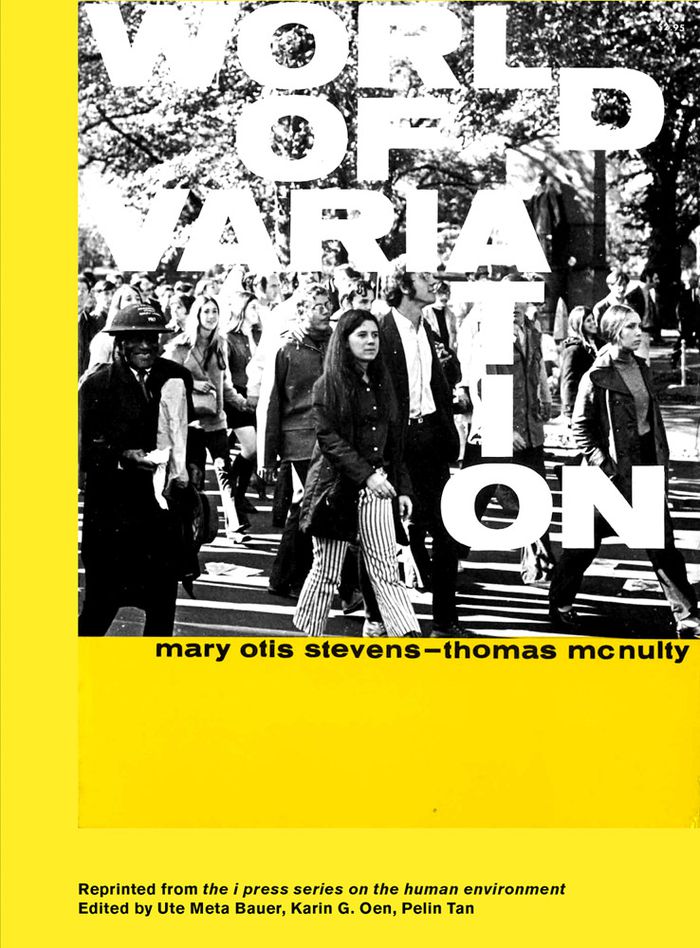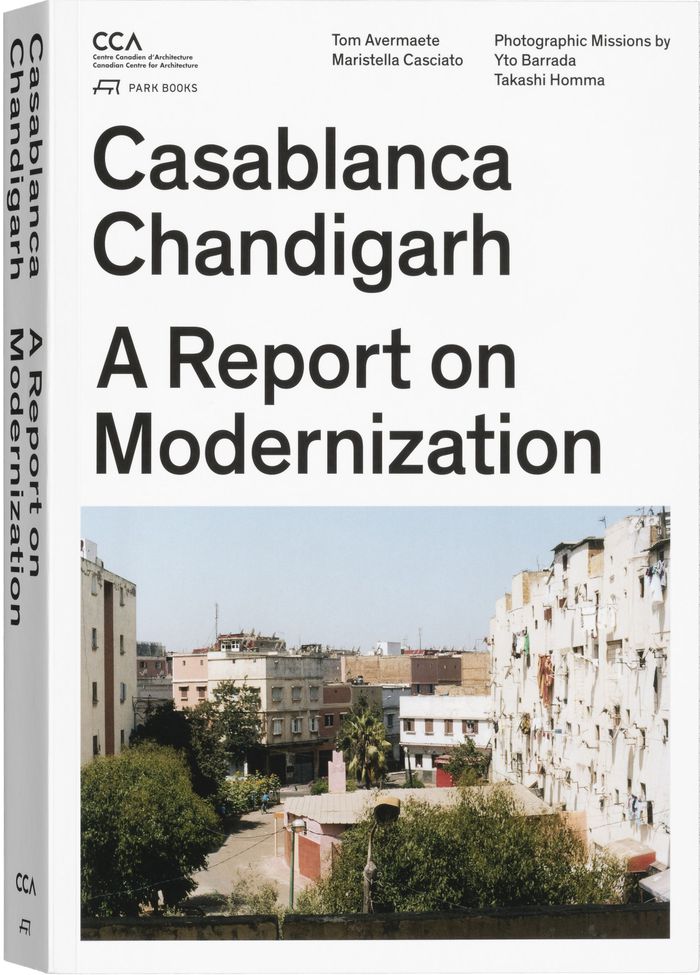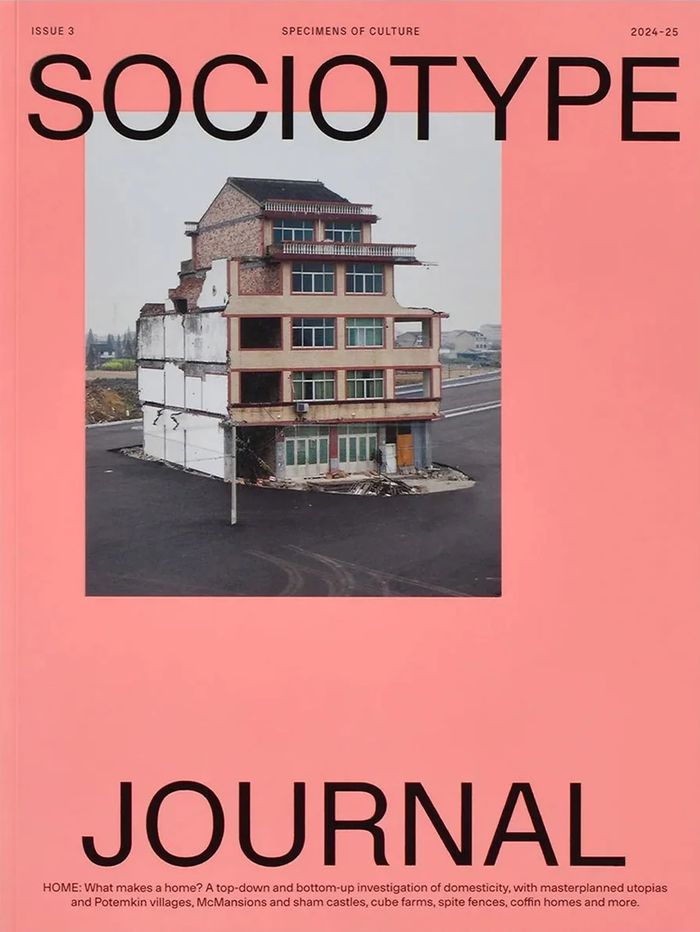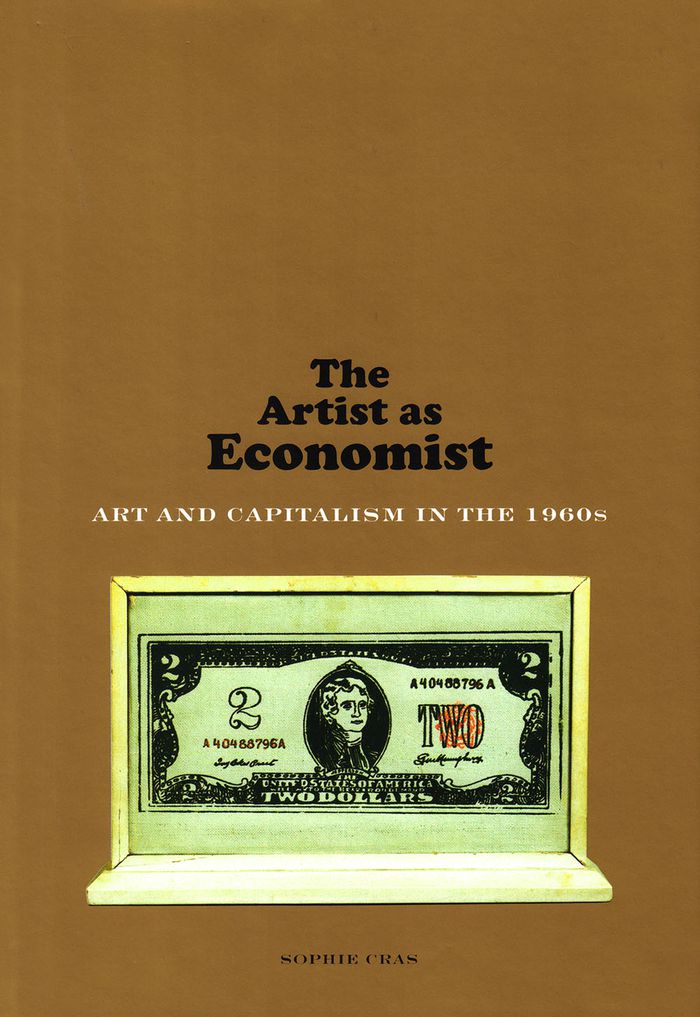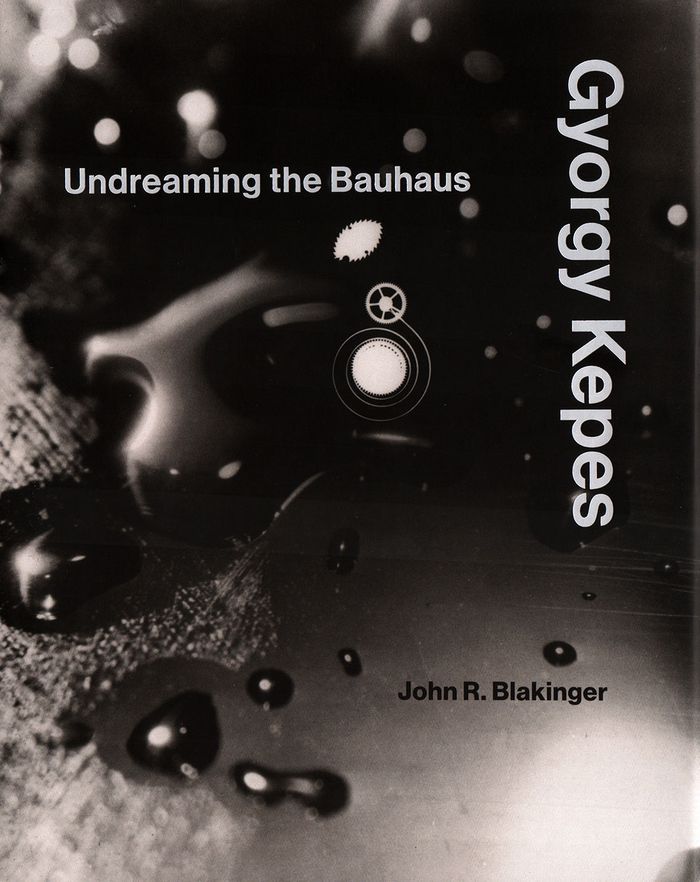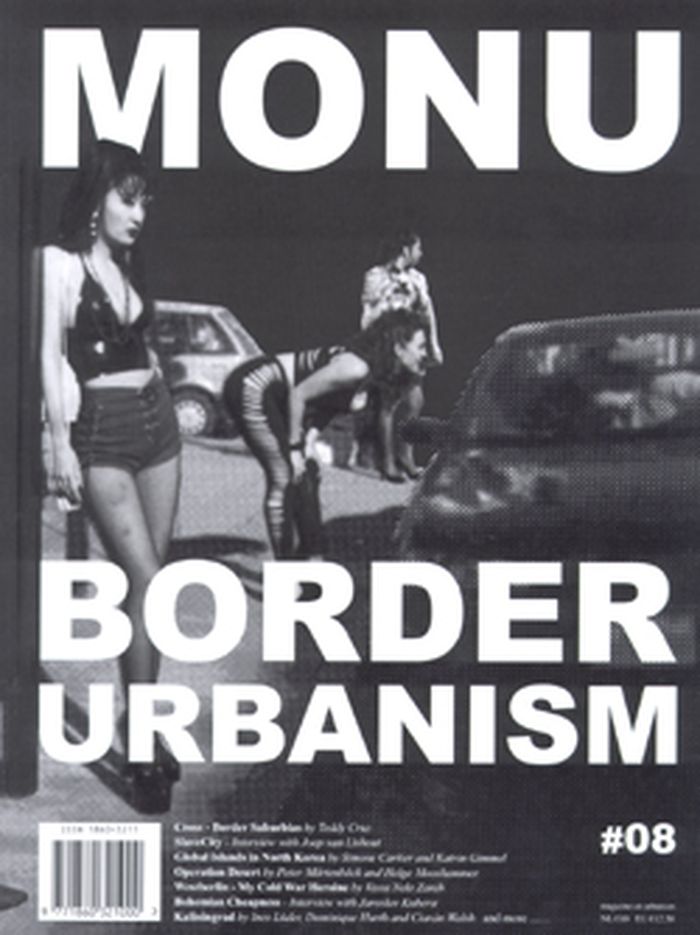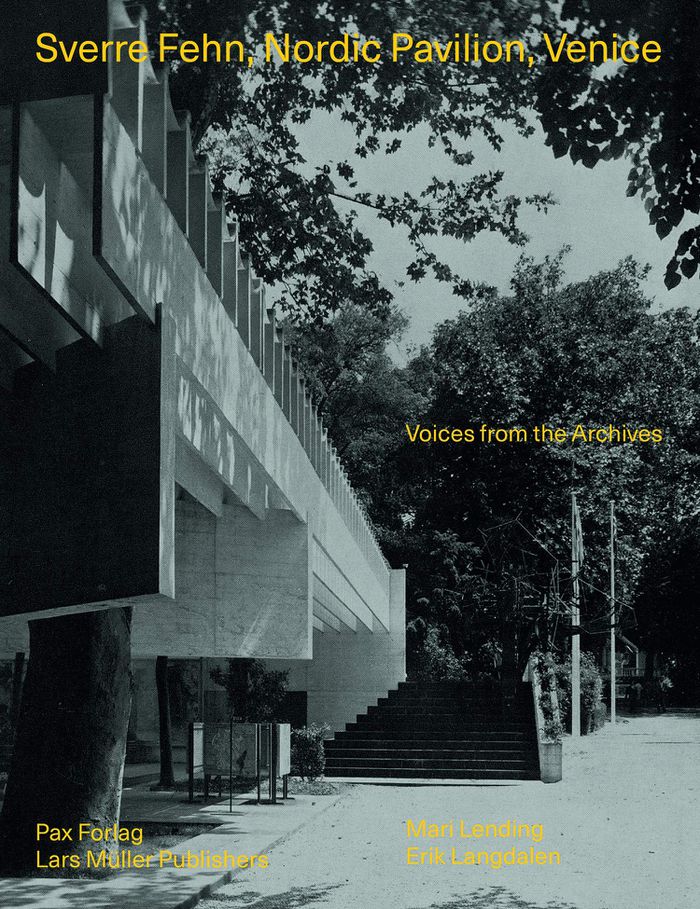World of variation
$35.00
(disponible en magasin)
Résumé:
In "World of variation" (1970), American architects Mary Otis Stevens (born 1928) and Thomas McNulty (1919–84) outlined a radical reenvisioning of socio-spatial relationships, informed by their background in philosophy and commitment to decentralizing hierarchies. Writing in the context of the Cold War and the political activism of 1960s America, they identified possible(...)
World of variation
Actions:
Prix:
$35.00
(disponible en magasin)
Résumé:
In "World of variation" (1970), American architects Mary Otis Stevens (born 1928) and Thomas McNulty (1919–84) outlined a radical reenvisioning of socio-spatial relationships, informed by their background in philosophy and commitment to decentralizing hierarchies. Writing in the context of the Cold War and the political activism of 1960s America, they identified possible design solutions to then-current social issues. In striking abstract drawings, Stevens visualized aspects of the urban environment, proposing a design philosophy she termed “free flow.” These diagrams give expression to both the “flow” of movement and points of “hesitations.” This volume is a facsimile of World of Variation, accompanying the MIT Museum’s exhibition on the work of Mary Otis Stevens.
Théorie de l’architecture
Nadav Kander: dust
$145.00
(disponible sur commande)
Résumé:
For Dust Ndav Kander photographed the desolated landscapes of the Aral Sea and the restricted military zones of Priozersk and Kurtchatov, which did not appear on any map until well after the end of the Cold War. Long-distance missiles were secretly tested in Priozersk, and hundreds of atomic bombs were detonated in the so-called Polygon near Kurchatov, until the program(...)
Nadav Kander: dust
Actions:
Prix:
$145.00
(disponible sur commande)
Résumé:
For Dust Ndav Kander photographed the desolated landscapes of the Aral Sea and the restricted military zones of Priozersk and Kurtchatov, which did not appear on any map until well after the end of the Cold War. Long-distance missiles were secretly tested in Priozersk, and hundreds of atomic bombs were detonated in the so-called Polygon near Kurchatov, until the program ended in 1989. The bombs were exploded in a remote but still populated area, and covert studies were made of the effects of the radiation on the unsuspecting inhabitants. Kander describes how the ticking of the Geiger counter on his belt while he photographed served as a foil against the aesthetic allure of the ruins.
Monographies photo
$45.00
(disponible en magasin)
Résumé:
This book documents two complementary urban realities that have played a fundamental role in the imagination, definition and redefinition of the twentieth-century modern city. Shifting away from an understanding of architecture as the construction of monumental masterpieces, the texts collected here assemble the narratives behind the public spaces, housing and social(...)
Casablanca Chandigarh: a report on modernization
Actions:
Prix:
$45.00
(disponible en magasin)
Résumé:
This book documents two complementary urban realities that have played a fundamental role in the imagination, definition and redefinition of the twentieth-century modern city. Shifting away from an understanding of architecture as the construction of monumental masterpieces, the texts collected here assemble the narratives behind the public spaces, housing and social facilities in these two cities, where modern plans have proven unexpectedly resilient and adaptable over time. This perspective is reinforced through visual contributions by Yto Barrada and Takashi Homma—two photographers especially invested in capturing everyday urban life. In a world marked by decolonization and Cold War politics, Casablanca and Chandigarh appear simultaneously as exponents of and countercurrents to modernization and its development perspectives. The book’s three chapters set the context for reading Casablanca and Chandigarh as the results of nuanced, dynamic processes of international exchange driven by the engagement and expertise of a new class of design professionals. As a dossier of actors, alignments and agendas, the book contributes to an alternative historiography of post-war urbanism and to recent reflections on the impact of transnational practice.
Publications du CCA
$50.00
(disponible en magasin)
Résumé:
"Welcome to Issue #3 of Sociotype Journal, the type specimen for designers who like to read. Our theme this time is Home. What makes a home? Or a home away from home? And how does power (or a lack of it) change the concept and the reality of what ‘home’ means? Join us for a top-down and bottom-up tour of domesticity, from geometrically pristine masterplanned utopias, to(...)
Sociotype Journal, issue 3 : Home
Actions:
Prix:
$50.00
(disponible en magasin)
Résumé:
"Welcome to Issue #3 of Sociotype Journal, the type specimen for designers who like to read. Our theme this time is Home. What makes a home? Or a home away from home? And how does power (or a lack of it) change the concept and the reality of what ‘home’ means? Join us for a top-down and bottom-up tour of domesticity, from geometrically pristine masterplanned utopias, to an altogether more DIY approach: unplanned and off-grid, into the margins, into ruin, and into hiding in plain sight. We’ll look at Potemkin villages and replica cities, McMansions and sham castles, cube farms and hot desks; spite fences, coffin homes, hippie communes, suburban malls, Cold War-era radar stations and more."
Revues
$88.95
(disponible sur commande)
Résumé:
Bearing witness to the changing economic landscape amid the Cold War, artists in the 1960s created works that critiqued, reshaped, and sometimes reinforced the spirit of capitalism. At a time when currency and finance were becoming ever more abstracted—and the art market increasingly an arena for speculation—artists on both sides of the Atlantic turned to economic themes,(...)
The artist as economist: art and capitalism in the 1960s
Actions:
Prix:
$88.95
(disponible sur commande)
Résumé:
Bearing witness to the changing economic landscape amid the Cold War, artists in the 1960s created works that critiqued, reshaped, and sometimes reinforced the spirit of capitalism. At a time when currency and finance were becoming ever more abstracted—and the art market increasingly an arena for speculation—artists on both sides of the Atlantic turned to economic themes, often grounded in a human context. ''The artist as economist'' examines artists who approached these issues in critical, imaginative, and humorous ways. Such examples, which author Sophie Cras insightfully situates within their historic economic context, reveal capitalism’s visual dimension. As art and economics grow more entangled, this volume offers a timely consideration of art’s capacity to reflect on and reimagine economic systems.
$77.95
(disponible sur commande)
Résumé:
Gyorgy Kepes (1906–2001) was the last disciple of Bauhaus modernism, an acolyte of László Moholy-Nagy and a self-styled revolutionary artist. But by midcentury, transplanted to America, Kepes found he was trapped in the military-industrial-aesthetic complex. In this first book-length study of Kepes, John Blakinger argues that Kepes, by opening the research laboratory to(...)
juin 2019
Gyorgy Kepes: undreaming the Bauhaus
Actions:
Prix:
$77.95
(disponible sur commande)
Résumé:
Gyorgy Kepes (1906–2001) was the last disciple of Bauhaus modernism, an acolyte of László Moholy-Nagy and a self-styled revolutionary artist. But by midcentury, transplanted to America, Kepes found he was trapped in the military-industrial-aesthetic complex. In this first book-length study of Kepes, John Blakinger argues that Kepes, by opening the research laboratory to the arts, established a new paradigm for creative practice: the artist as technocrat. First at Chicago's New Bauhaus and then for many years at MIT, Kepes pioneered interdisciplinary collaboration between the arts and sciences- what he termed “interthinking” and “interseeing.” Kepes and his colleagues, ranging from metallurgists to mathematicians, became part of an important but little-explored constellation: the Cold War avant-garde.
$22.50
(disponible sur commande)
Résumé:
SlaveCity - Interview with Joep van Lieshout Potential Nation States by STAR Global Islands in North Korea by Simone Cartier and Katrin Gimmel Operation Desert by Peter Mörtenböck and Helge Mooshammer Kaliningrad by Ines Lüder, Dominique Hurth and Ciarán Walsh Segregated Istanbul by Pelin Tan Crisscrossing Lives by Horng-Chang Hsieh and Vittaya Ruangrit A(...)
MONU - magazine on urbanism no 8 Border Urbanism
Actions:
Prix:
$22.50
(disponible sur commande)
Résumé:
SlaveCity - Interview with Joep van Lieshout Potential Nation States by STAR Global Islands in North Korea by Simone Cartier and Katrin Gimmel Operation Desert by Peter Mörtenböck and Helge Mooshammer Kaliningrad by Ines Lüder, Dominique Hurth and Ciarán Walsh Segregated Istanbul by Pelin Tan Crisscrossing Lives by Horng-Chang Hsieh and Vittaya Ruangrit A Fictional Dialogue between two Curators by Umi Cross - Border Suburbias by Teddy Cruz Reciprocal Developments by Arjan Harbers and Kristin Jensen Tijuana - Vernacular by Federico Diaz de Leon Orraca Border Models by Annemarie Strihan Bohemian Cheapness - Interview with Jaroslav Kubera Sin City by Daan Roggeveen On a Trip Down Memory Lane by Lukas Feireiss Windsor: The American Sector by Justin A. Langlois Westberlin - My Cold War Heroine by Vesta Nele Zareh
Revues
$13.00
(disponible sur commande)
Résumé:
Du gazon "américain"?! Une pelouse en guerre?! De Pearl Harbor à la Crise des missiles cubains?! Pour Beatriz Colomina, historienne de l'architecture à l'université de Princeton, le mythe patriotique du carré de pelouse (lawn) et le combat jardinier quotidien pour le maintien et l'embellissement de cette interface domestique de la famille et de la communauté reflètent une(...)
La pelouse américaine en guerre de Pearl Harbour à la Crise des Missiles, 1941-1961
Actions:
Prix:
$13.00
(disponible sur commande)
Résumé:
Du gazon "américain"?! Une pelouse en guerre?! De Pearl Harbor à la Crise des missiles cubains?! Pour Beatriz Colomina, historienne de l'architecture à l'université de Princeton, le mythe patriotique du carré de pelouse (lawn) et le combat jardinier quotidien pour le maintien et l'embellissement de cette interface domestique de la famille et de la communauté reflètent une certaine conception du sol américain et de son paysage. Mais ils révèlent surtout une conception de la démocratie et de ses valeurs associées : libertés fondamentales, propriété privée et poursuite du bonheur, trilogie littéralement boostée durant la phase d'émergence de l'Americain Way of Life et de la Cold War. En menant une enquête visuelle et culturelle aussi serrée que passionnante, l'historienne répond à ces trois questions.
Théorie de l’architecture
livres
$67.95
(disponible sur commande)
Résumé:
The dream of the twentieth century was the construction of mass utopia. As the century closes, this dream is being left behind; the belief that industrial modernization can bring about the good society by overcoming material scarcity for all has been challenged by the disintegration(...)
Dreamworld and catastrophe : the passing of mass utopia in East and West
Actions:
Prix:
$67.95
(disponible sur commande)
Résumé:
The dream of the twentieth century was the construction of mass utopia. As the century closes, this dream is being left behind; the belief that industrial modernization can bring about the good society by overcoming material scarcity for all has been challenged by the disintegration of European socialism, capitalist restructuring, and ecological constraints. The larger social vision has given way to private dreams of material happiness and to political cynicism. Developing the notion of dreamworld as both a poetic description of a collective mental state and an analytical concept, Susan Buck-Morss attempts to come to terms with mass dreamworlds at the moment of their passing. She shows how dreamworlds became dangerous when their energy was used by the structures of power as an instrument of force against the masses. Stressing the similarities between the East and West and using the end of the Cold War as her point of departure, she examines both extremes of mass utopia, dreamworld and catastrophe. The book is in four parts. "Dreamworlds of Democracy" asks whether collective sovereignty can ever be democratic. "Dreamworlds of History" calls for a rethinking of revolution by political and artistic avant-gardes. "Dreamworlds of Mass Culture" explores the affinities between mass culture's socialist and capitalist forms. An "Afterward" places the book in the historical context of the author's collaboration with a group of Moscow philosophers and artists over the past two tumultuous decades. The book is an experiment in visual culture, using images as philosophy, presenting, literally, a way of seeing the past. Its pictorial narratives rescue historical data that with the end of the Cold War are threatened with oblivion and challenge common conceptions of what this century was all about.
livres
janvier 1900, Cambridge
Théorie de l’architecture
$70.00
(disponible sur commande)
Résumé:
Sverre Fehn’s Nordic Pavilion in Venice is a masterpiece of postwar architecture. The young Norwegian architect won the competition in 1958; the building was inaugurated in 1962. In minute detail, this book presents the history of the origins and making of the Nordic pavilion, covering everything from the geopolitical context in an increasingly tense cold-war atmosphere(...)
Sverre Fehn: Nordic Pavilion, Venice
Actions:
Prix:
$70.00
(disponible sur commande)
Résumé:
Sverre Fehn’s Nordic Pavilion in Venice is a masterpiece of postwar architecture. The young Norwegian architect won the competition in 1958; the building was inaugurated in 1962. In minute detail, this book presents the history of the origins and making of the Nordic pavilion, covering everything from the geopolitical context in an increasingly tense cold-war atmosphere to the aggregates in the concrete of the audacious roof construction. ''Sverre Fehn : Nordic Pavilion, Venice'' also documents the vast cast involved in the making of the Nordic Pavilion, from kings, prime ministers, bureaucrats, ambassadors, museum directors, architects and a myriad of artists’ associations to Venetian dignitaries, engineers, gardeners, lawyers and plumbers. Illustrated with previously unpublished images, the archival evidence also sheds new light on one of the great Nordic architects of the recent past.
Architecture, monographies
